Students gathered around simmering pans of frying oil and pored over a 19th-century recipe for beignets soufflés, their speech slipping fluidly between French and English. They were all enrolled in a special topics course, “Women’s Labor: Wage, Domestic, and Childbirth Work in Nineteenth Century France,” taught by Dr. Magdala Lissa Jeudy, Assistant Professor in the Department of French and Italian.
For this final course meeting of the semester, they weren’t just talking about what they’d been studying for the last several months — they were putting these ideas into practice, in the form of an experiential cooking demonstration.
The 1820 recipe came from the Wangensteen Historical Library (WHL) of Biology and Medicine. Students were first introduced to some of the archival recipes in the WHL’s collection by Associate Curator Dr. Emily Beck; after an anonymous voting session, they collectively settled on beignets soufflés, which are small deep-fried choux puffs served with sabayon, a rich but simple sauce made from egg yolks.
Before splitting the class into two four-person cooking groups, Dr. Jeudy encouraged students to reflect on the themes they’d been discussing all semester: how would they divide the labor of cooking between themselves? And how might this experience shape their ideas for labor reform by challenging them to think collectively?
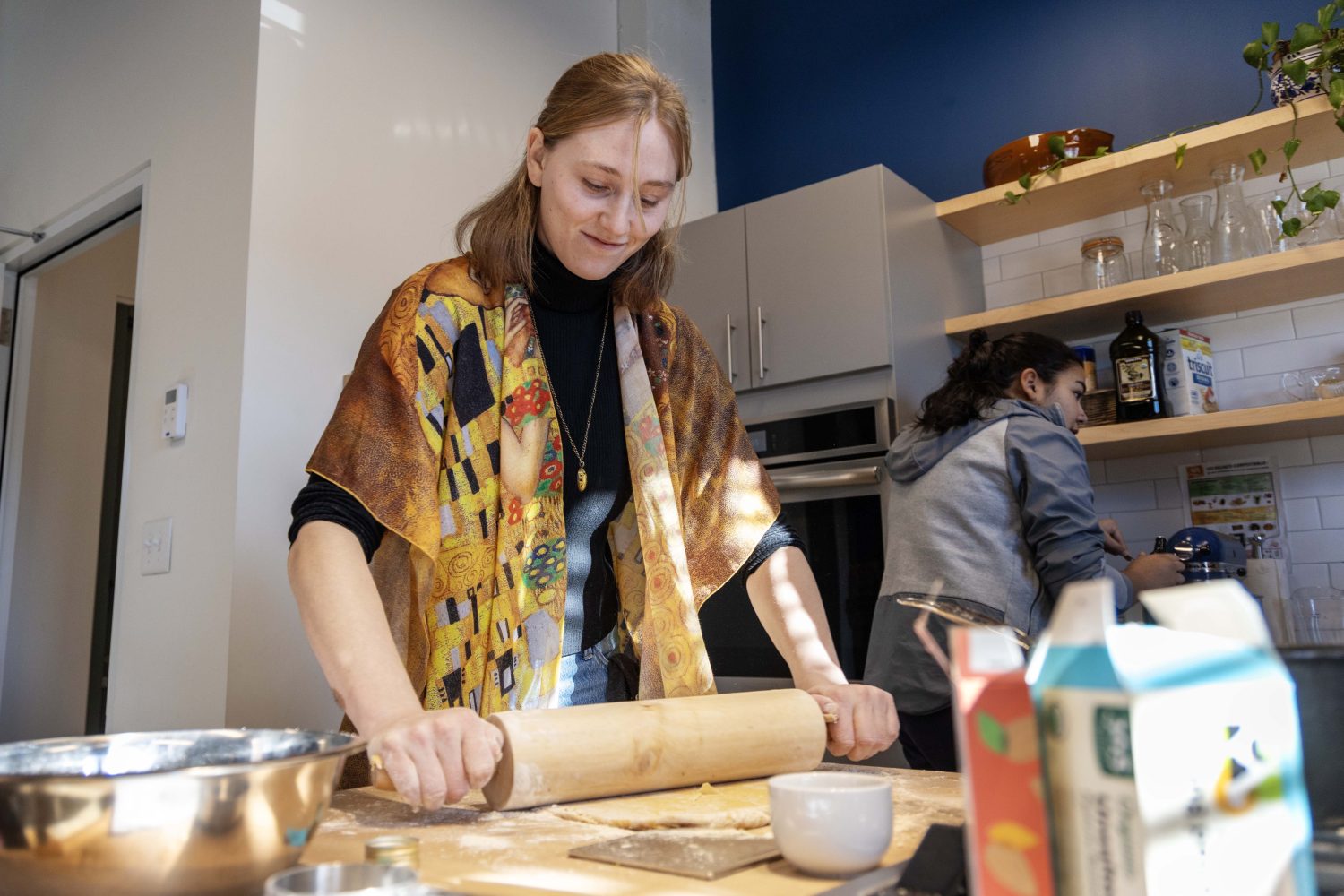
Rolling out dough for the beignets soufflés. (Photo/Adria Carpenter)
Origins of the course
The idea for the course emerged from a pivotal scene in Émile Zola’s 1877 novel, “L’assommoir.” In this scene, the protagonist, Gervaise Macquart, goes into labor while at work. She completes her shift, returns home, and cooks dinner for her husband — all while still in labor. Throughout the semester, students were prompted to consider the roles assigned to and improvised by women in 19th century France, with a particular focus on childbirth as a form of labor alongside wage and domestic work.
As students annotated their 19th century recipes and puzzled over just how many eggs is “as many eggs as you need,” they reflected on their understandings of labor: what it meant in 19th century France, how it’s evolved, and how intersecting identities like gender, class, and (dis)ability informed — and continue to inform — peoples’ livelihoods, as well as their relationships to state, religious, and medical institutions.
“This was a lot of work for four people — and we’re not in labor,” said Grace Lundgren, a senior history major. “It adds perspective to how hard this was.”
Several other students agreed, including Uly Zigmund, a senior French major, who was surprised by “the intensity of [the experience],” and how much it demanded of the students.
Hands-on experiences are critical for students
While certain modern conveniences might have made the cooking process a little different than it would have been 200 years ago — there were no KitchenAid stand mixers in the 19th century, after all — Dr. Beck notes that hands-on learning opportunities like these are critical for providing students insight into the embodied knowledge that historical people had.
“Even if whatever they’re cooking doesn’t turn out to be delicious, it gives them important information about what people expected from their food, what knowledge they had to have in order to feed their communities, and the social dynamics of women’s labor in this period.”
Dr. Jeudy concurred, calling the lesson a kind of “psychosomatic experimentation meant to instigate transformative and transgressive learning.”
Or, as Natalie Rath, a second-year French major succinctly put it: “I can pretend I’m Gervaise.”
Take it from this writer: the beignets soufflés cooking experience wasn’t just intellectually engaging — it was also every bit as delicious as it looked.
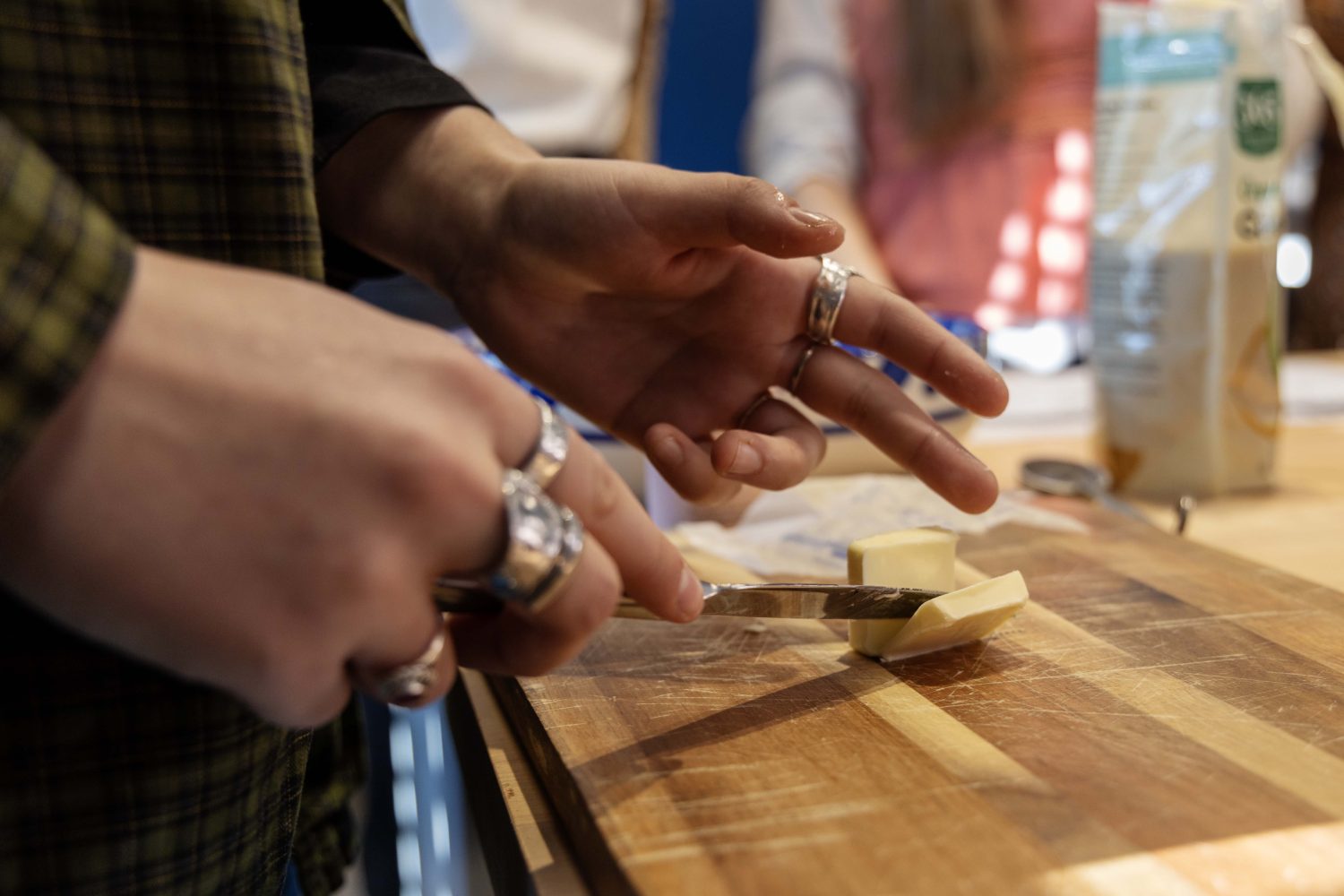
Students slice butter while preparing their beignets soufflés. (Photo/Adria Carpenter)
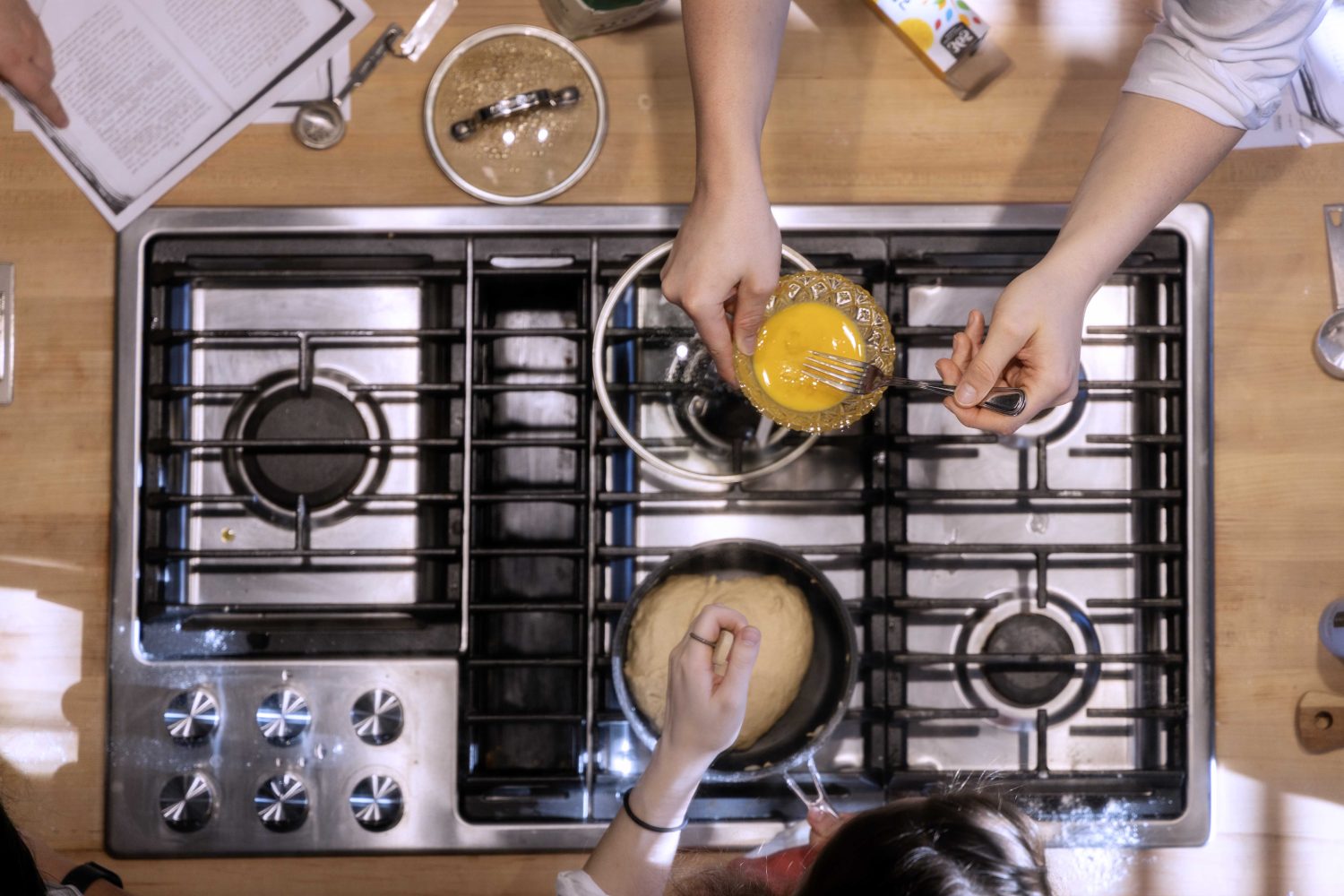
Preparing the sabayon. (Photo/Adria Carpenter)
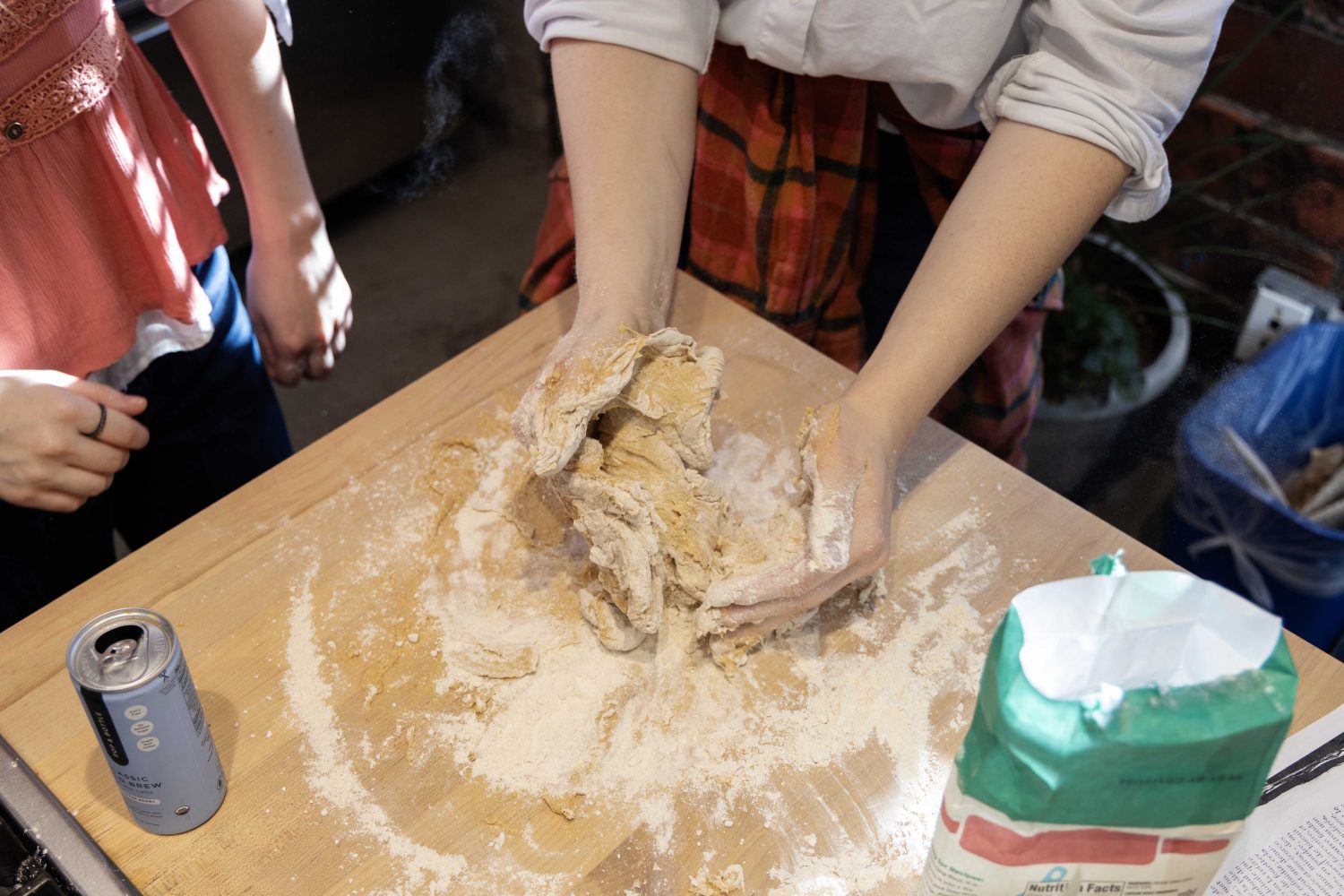
Kneading the dough for the beignets. (Photo/Adria Carpenter)
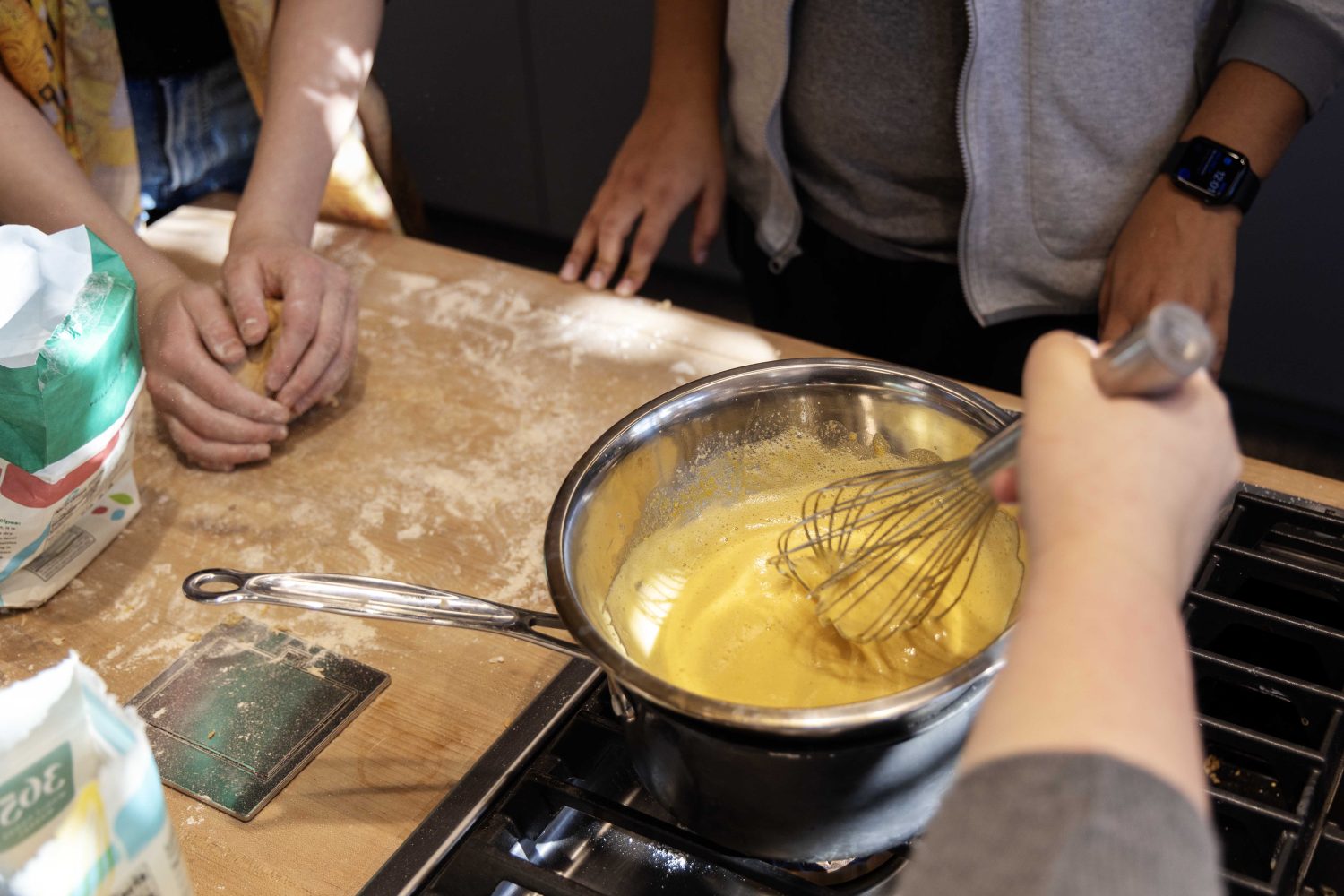
To avoid heating the eggs too quickly, students heat their sabayon using a bain-marie, or a metal bowl placed over a pot of boiling water. (Photo/Adria Carpenter)

The beignets take a dip in hot oil. (Photo/Adria Carpenter)
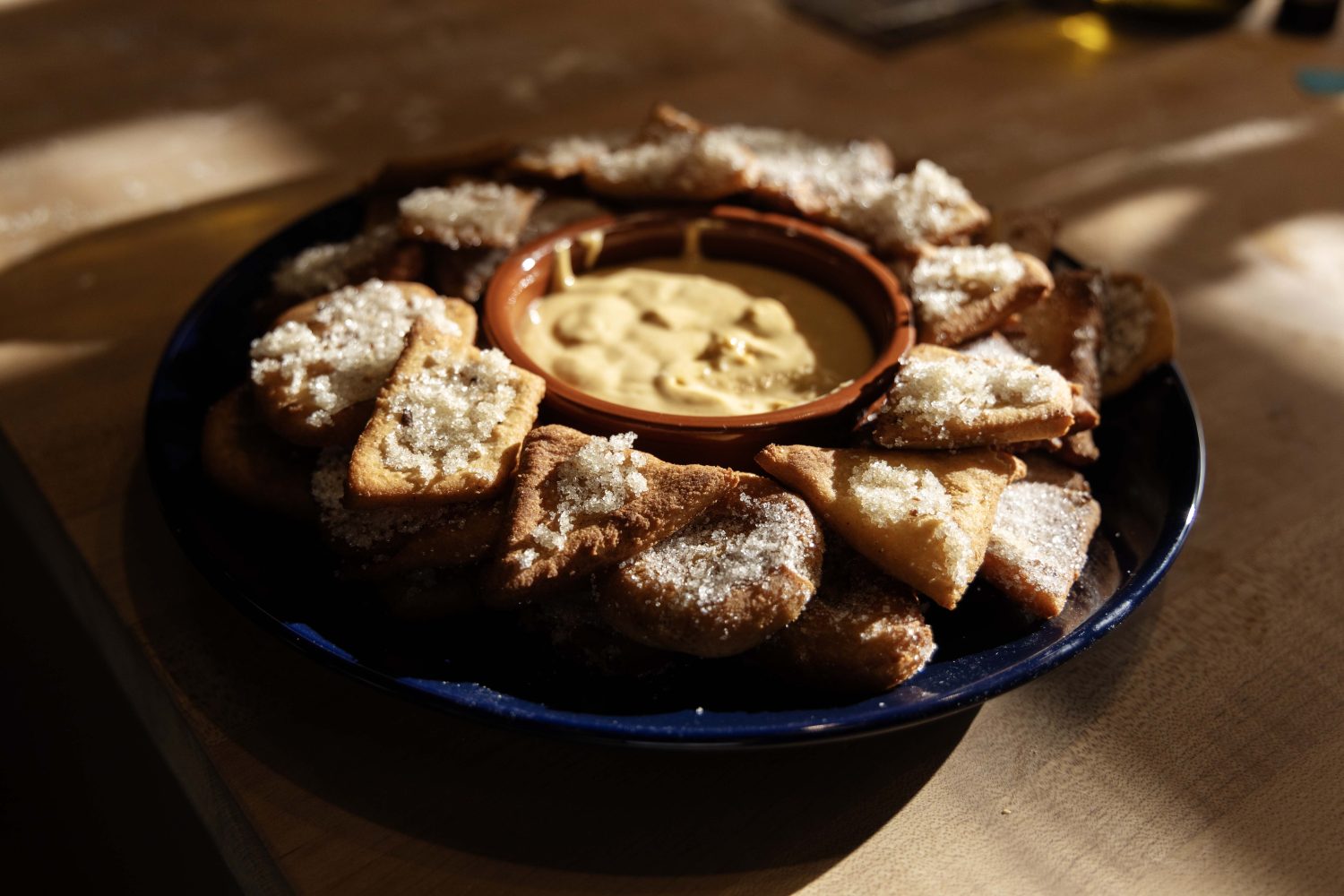
The finished product! (Photo/Adria Carpenter)




